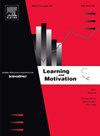延迟匹配-样本任务中的眼睛注视作为MTS任务刺激类别形成的预测因子
IF 1.8
4区 心理学
Q3 PSYCHOLOGY, BIOLOGICAL
引用次数: 0
摘要
本研究考察了在不同延迟的样本匹配(MTS)任务中,眼睛对样本刺激的注视时间是否能预测等效类形成的成功。9名典型发育成人使用一对多(OTM)结构完成条件歧视训练,建立4个三人等价班级。每个类在不同的延迟条件下训练:同时MTS, 0-s, 2-s或4-s样本偏移和比较开始之间的延迟。在整个训练过程中记录眼球运动以评估观察行为。7名学员达到学习标准,并表现出对等的班级形成。延迟条件对等效或对称关系的获得或出现没有显著影响。同样,在不同的延迟条件下,样品注视时间也没有显著差异。然而,在早期训练阶段,注视时间更长,这表明这是一种练习效果。样本反应潜伏期与注视时间之间也存在很强的正相关关系,这支持了潜伏期可能反映参与时间的解释。这些发现挑战了延长延迟间隔内在地通过扩展样本观察来增强学习的观点,而是强调了直接眼动追踪测量在理解观察行为及其与刺激控制的关系方面的价值。本文章由计算机程序翻译,如有差异,请以英文原文为准。
Eye Fixations in Delayed Matching-to-Sample Task as Predictors of Stimuli Class Formation in MTS Tasks
This study examined whether eye fixation duration on sample stimuli predicts success in equivalence class formation during matching-to-sample (MTS) tasks with varying delays. Nine typically developing adults completed conditional discrimination training using a one-to-many (OTM) structure to establish four three-member equivalence classes. Each class was trained under a different delay condition: simultaneous MTS, 0-s, 2-s, or 4-s delays between sample offset and comparison onset. Eye movements were recorded throughout training to assess observing behavior. Seven participants met the learning criterion and demonstrated equivalence class formation. The delay condition did not significantly affect the acquisition or emergence of equivalence or symmetry relations. Similarly, sample fixation durations did not significantly differ across delay conditions. However, fixation durations were longer in early training blocks, suggesting a practice effect. A strong positive correlation between sample response latency and fixation duration also emerged, supporting the interpretation that latency may reflect engagement time. These findings challenge the view that increased delay intervals inherently enhance learning by extending sample observation and instead highlight the value of direct eye-tracking measures in understanding observing behavior and its relation to stimulus control.
求助全文
通过发布文献求助,成功后即可免费获取论文全文。
去求助
来源期刊

Learning and Motivation
Multiple-
CiteScore
2.90
自引率
0.00%
发文量
53
期刊介绍:
Learning and Motivation features original experimental research devoted to the analysis of basic phenomena and mechanisms of learning, memory, and motivation. These studies, involving either animal or human subjects, examine behavioral, biological, and evolutionary influences on the learning and motivation processes, and often report on an integrated series of experiments that advance knowledge in this field. Theoretical papers and shorter reports are also considered.
 求助内容:
求助内容: 应助结果提醒方式:
应助结果提醒方式:


